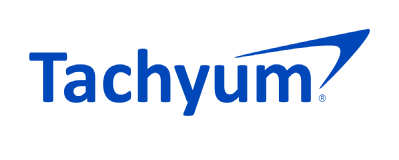New Silicon Valley in Slovakia? Why supercomputer is the key
When Silicon Valley is mentioned, everyone instantly imagines a unique area in California with the most prestigious technology companies, where the best talent in the world work on technological innovations. It is a hotspot that the whole world knows.
Could you imagine such a technological hub with a similar reputation in Europe or even in Slovakia? It sounds like science fiction, but the key to success could be the world’s fastest AI supercomputer that Slovakia intends to build.
Why an AI supercomputer?
Supercomputing is something far removed from the average person’s thinking. Its benefits for society and its connections to everyday life can be hard to imagine, especially in our region. However, the reality is that the presence of high-performance computing (HPC) and artificial intelligence have expanded into areas of our lives we would not have expected before. Did you know that the design of Pringle’s potato chips was crafted by engineers using supercomputers, making chips easy to stack up and impossible to predict how they will break up when you eat them, creating a crunchier snack?
One of the sectors where the use of supercomputers is growing rapidly and becoming established is the automotive industry. The world’s car manufacturers use the capacity of supercomputers to design car bodies, improve aerodynamics, reduce fuel consumption and increase safety by simulations of collisions in crash tests. The automotive industry has built a strong tradition in Slovakia and the CEE region, so why not also move development here, in addition to assembly lines? With supercomputer capacity and performance, research and development in this region could move to a whole new level.
Another real-life application of supercomputers is healthcare. And this is for several reasons. One of them is vaccine and drug development, which can be attributed to high performance computing, which has shortened some vaccine development to one year, thus saving many human lives. The Covid-19 pandemic has shown the need to make this development more effective. Another aspect is the possibility of diagnostics improvements, such as cancer or other serious diseases, where, in particular, AI plays a critical role.
Today, there is no doubt that AI is increasingly becoming part of many aspects of our lives and societies. We use AI practically every day. It has changed the way we travel, communicate, and shop; it is used by hospitals to analyze images and symptoms, so they can provide better healthcare.
Most well-developed countries have understood this fact and reflected the critical role of AI in their national strategies and visions. Many developing countries are also beginning to realize this fact and are also working on their strategies, to not “miss the train”. According to PwC’s recent global AI study, AI will increase global GDP by 14%, or $15.7 trillion, by 20301. It is not a question of whether, but when the country should start preparing a national AI strategy, so that its economy does not stagnate and national GDP is not adversely impacted. AI is an opportunity for every country, because all countries today still stand on roughly the same starting line.
Slovakia would not have to start building its “Technological Valley” from scratch and on a “green field”. It may try to leverage one of its existing initiatives. Košice has good prerequisites in this regard, especially for their cooperation between universities, the connection of education with research and development, and the integration of industry into this ecosystem. An example is the Cassovia New Industry Cluster (CNIC) or IT Valley.
However, for these initiatives to succeed in attracting the world’s attention, and to get on the map of “technology valleys”, they must have something unique, something that’s the best in the world. That “something” could be a human brain-scale AI supercomputer. Such a project would certainly attract attention, and when combined with the right set-up, it can be a “magnet, not only for the region of Central and Eastern Europe but also for the European Union and the world. Slovakia would thus get on the “radars” of the world scientists, universities, global companies, and other relevant organizations.
Slovakia’s “Technological Valley” with the fastest AI supercomputer could play a key role in one of the main European projects for the next decade: “Destination Earth”. It is a digital twin of the Earth, a highly accurate model of the earth, powered by supercomputers, AI, Cloud computing and high-speed connectivity networks. Fed by various data sources, such as our eyes in the sky (Copernicus satellites) that will monitor and predict environmental change and its impact on human lives, it will give citizens the opportunity to critically assess policies and measures that affect them. The aim of this project is to analyze the past, monitor the present, and predict the future. Slovakia, with its human brain-scale supercomputer, could be at the center of this major inflection point,
The new Slovak supercomputer has been discussed for a long time, and plans to build it are finally becoming a reality. Slovakia has a unique opportunity to build the fastest AI supercomputer in the world. Let’s not miss this ”once-in-a-generation” opportunity.
PwC Global AI Study: Exploiting the AI Revolution ↩︎

